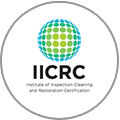Have you ever wondered what happens to the wastewater generated from your home or workplace? How is sewage properly disposed of to protect public health and the environment? It’s a topic that often goes unnoticed, but understanding the importance of sewage disposal and the processes involved can shed light on the essential steps taken to prevent the spread of disease and environmental pollution.
Sewage disposal encompasses more than just flushing the toilet and watching it disappear. It involves the effective management of wastewater from various sources, such as residential, commercial, and industrial, to ensure it is treated and disposed of responsibly. If left untreated, sewage can be a breeding ground for harmful pathogens and contaminants that pose significant risks to both human populations and ecosystems.
In this article, we will dive into the world of sewage disposal, exploring the importance of proper sewage management, the treatment processes involved, relevant regulations and guidelines, and the modern methods employed to handle wastewater efficiently. Let’s unravel the mystery of sewage disposal and discover the measures undertaken to keep our environment and ourselves safe.
Key Takeaways:
- Proper sewage disposal is crucial for protecting public health and preventing environmental pollution.
- Sewage treatment processes involve physical, biological, and advanced treatment stages to remove impurities from wastewater.
- Regulations and guidelines play a key role in ensuring responsible sewage disposal.
- Modern methods of sewage disposal include on-site systems, centralized treatment plants, and wastewater reuse.
- Responsible sewage disposal is essential for maintaining a sustainable and healthy environment for all.
The Importance of Proper Sewage Disposal
Safeguarding public health and preventing the transmission of diseases are paramount reasons for ensuring proper sewage disposal practices. Inadequate sewage disposal can lead to the contamination of drinking water sources, posing a significant risk to human health. Raw sewage contains harmful bacteria, viruses, parasites, and other microorganisms that can cause illnesses such as gastroenteritis, hepatitis, and cholera. These sewage-related diseases can have severe public health implications and can be easily prevented through responsible disposal methods.
In addition to the risks to public health, inadequate sewage disposal contributes to environmental pollution. When sewage is not properly treated and disposed of, it can contaminate water bodies, degrading water quality and harming aquatic life. The consequences of environmental pollution from sewage can be far-reaching, affecting entire ecosystems and creating long-term damage.
Implementing effective sewage disposal systems is therefore essential for protecting both human populations and ecosystems. By establishing and adhering to proper sewage disposal practices, we can minimize the spread of sewage-related diseases, prevent environmental pollution, and ensure the sustainability of our communities.
Understanding Sewage Treatment Processes
Sewage treatment is a complex process that involves multiple stages to effectively remove impurities and contaminants from wastewater. These treatment processes ensure that the wastewater is safe for discharge into the environment or reuse for various purposes. Let’s explore the different stages of sewage treatment and their significance in wastewater management.
Primary Treatment:
The first stage of sewage treatment is known as primary treatment. In this stage, solid materials present in the wastewater are physically separated through processes like screening, sedimentation, and filtration. This helps remove larger particles such as debris, sand, and gravel, as well as floating materials like oils and grease. By eliminating these materials, the treatment process becomes more efficient, and subsequent stages can focus on removing dissolved and suspended pollutants.
Secondary Treatment:
After primary treatment, the wastewater undergoes secondary treatment, which primarily focuses on the biological breakdown of organic matter. In this stage, microorganisms are introduced into the wastewater to consume and decompose organic pollutants. Common secondary treatment processes include activated sludge, trickling filters, and sequencing batch reactors. Through these biological processes, organic pollutants are transformed into more stable and less harmful forms, reducing the environmental impact of the wastewater.
Tertiary Treatment:
The final stage of sewage treatment, known as tertiary treatment or advanced treatment, involves additional processes to further improve the quality of the wastewater. This stage is especially crucial when the treated wastewater is intended for reuse. Tertiary treatment typically includes processes like disinfection, where chemicals or physical methods are used to destroy or inactivate remaining pathogens. Nutrient removal is also an essential component of tertiary treatment, as excessive nutrients like nitrogen and phosphorus can lead to ecosystem imbalances in receiving water bodies.
The image above illustrates the intricate processes involved in wastewater treatment and highlights the efforts made to ensure the removal of impurities and contaminants. Through these treatment stages, sewage treatment plants play a vital role in purifying wastewater and making it safe for release into the environment or for recycling purposes, such as irrigation, industrial processes, and groundwater recharge.
By understanding these sewage treatment processes and the importance of wastewater recycling, we can work towards sustainable water management and reduce the strain on our valuable water resources.
Regulations and Guidelines for Sewage Disposal
Sewage disposal is carefully regulated by environmental protection agencies at both the federal and state levels. In the United States, the Environmental Protection Agency (EPA) plays a crucial role in setting guidelines and standards for wastewater management. The EPA’s regulations are designed to ensure the safe and proper disposal of sewage, preventing potential harm to public health and the environment.
The Clean Water Act, established in 1972, is a key federal legislation that governs the discharge of pollutants into water bodies. It sets the foundation for sewage disposal regulations and aims to maintain the quality of water resources. The EPA’s wastewater management guidelines and regulations address various aspects, including treatment requirements, effluent limits, and monitoring practices.
State and local authorities also play an important role in sewage disposal regulation. They have their own set of regulations and guidelines to ensure that sewage is properly managed and disposed of without causing harm to local ecosystems and communities. These regulations may vary from state to state depending on local conditions and needs.
Compliance with sewage disposal regulations is essential for maintaining environmental sustainability and preventing penalties. Proper adherence to these regulations ensures that sewage is treated effectively and safely, protecting both public health and the environment. By following the guidelines established by the EPA and local authorities, communities can play a crucial role in maintaining the integrity of water resources and promoting responsible wastewater management.
How Do You Dispose of Sewage? A Look at Modern Methods
When it comes to sewage disposal, various methods are available to cater to different scales, locations, and infrastructure requirements. Let’s explore some of the modern methods used for efficient sewage disposal and wastewater management.
One common method used in rural areas where centralized treatment facilities are not accessible is the use of septic systems, such as septic tanks. These on-site systems treat wastewater right on the property itself, ensuring that it is properly disposed of or leached into the surrounding soil.
In urban areas and larger communities, centralized treatment plants play a crucial role in handling sewage from multiple sources. These plants utilize advanced sewage treatment technologies to achieve efficient and thorough wastewater treatment. Techniques such as activated sludge processes, trickling filters, and membrane filtration are commonly employed to remove impurities and contaminants from the sewage.
Moreover, wastewater reuse has gained prominence as a sustainable practice in recent years. Treated sewage can be reclaimed and used for various purposes, such as irrigation, industrial processes, and groundwater recharge. Wastewater reuse not only reduces the strain on freshwater resources but also promotes environmental sustainability.
By adopting these modern methods of sewage disposal, communities can ensure effective wastewater management, protect public health, and contribute to a cleaner and more sustainable environment.
Conclusion
Proper sewage disposal is a critical aspect of maintaining public health and protecting the environment. It is essential for individuals, communities, and authorities to prioritize responsible sewage disposal to safeguard the well-being of both humans and ecosystems. By implementing effective sewage treatment processes and adhering to regulations and guidelines, communities can ensure that wastewater is safely and responsibly managed.
From on-site systems like septic tanks to centralized treatment plants, various methods are available based on the specific needs and infrastructure of an area. On-site systems are commonly used in rural areas where centralized treatment facilities are not accessible, while centralized treatment plants are employed in urban areas and larger communities. These treatment plants use advanced technologies like activated sludge processes, trickling filters, and membrane filtration to achieve efficient and thorough wastewater treatment.
Additionally, exploring innovative approaches like wastewater reuse can contribute to sustainable water management. Reclaimed and treated sewage can be utilized for various purposes such as irrigation, industrial processes, and groundwater recharge. This practice not only reduces freshwater demand but also minimizes the environmental impact of wastewater disposal.
In summary, responsible sewage disposal requires a combination of effective sewage treatment methods, adherence to regulations and guidelines, and the exploration of innovative practices like wastewater reuse. By prioritizing these wastewater management practices, communities can ensure the protection of public health and the preservation of our environment.
FAQ
What is sewage disposal?
Sewage disposal refers to the safe and effective management of wastewater generated from residential, commercial, and industrial sources. It involves treating and disposing of sewage in a responsible manner to protect public health and the environment.
Why is proper sewage disposal important?
Proper sewage disposal is important for several reasons. Firstly, it helps safeguard public health by preventing the spread of diseases caused by sewage-related contaminants. Secondly, it helps prevent environmental pollution, protecting water bodies and ecosystems from the harmful effects of untreated sewage.
What are the sewage treatment processes?
Sewage treatment involves various processes to remove impurities from wastewater. These processes include physical separation through screening, sedimentation, and filtration, biological breakdown of organic matter, and additional treatments like disinfection and nutrient removal to improve water quality.
Are there regulations for sewage disposal?
Yes, sewage disposal is regulated by environmental protection agencies at both the federal and state levels. The Environmental Protection Agency (EPA) sets guidelines and standards for wastewater management, and compliance with these regulations is crucial to maintain environmental sustainability and avoid penalties.
What are the modern methods of sewage disposal?
Modern methods of sewage disposal include on-site systems like septic tanks in rural areas, centralized treatment plants in urban areas, and the reuse of treated wastewater for purposes such as irrigation and industrial processes.






